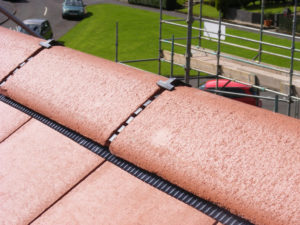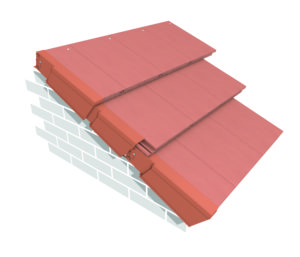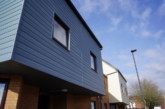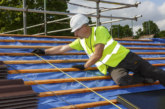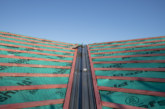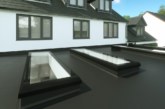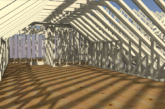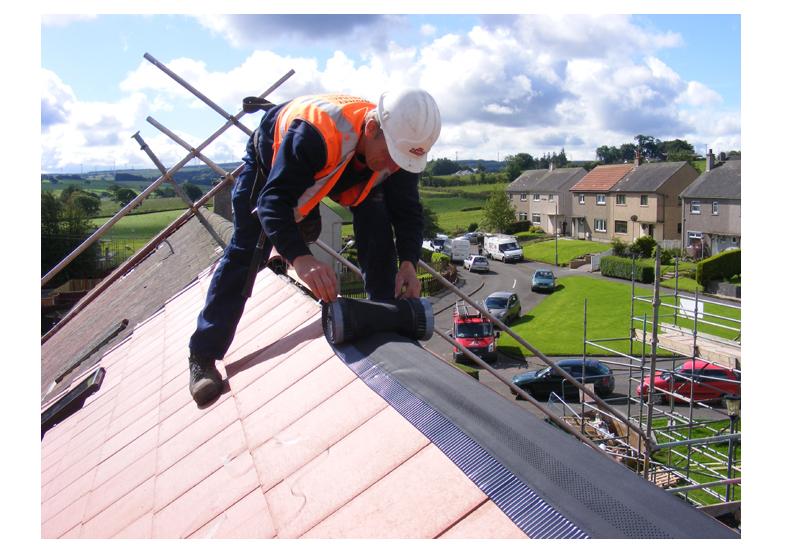
Gavin White, product manager from Marley Eternit, explains why housebuilders and property developers need to consider the quality of dry fix systems as part of the roof specification process.
Dry fix is undoubtedly the best way for housebuilders and developers to meet more stringent roof fixing requirements but its increasing use has led to some concerns about inconsistencies in the quality of components used in different dry fix systems.
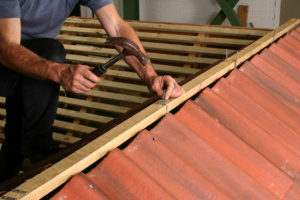 The new Code of Practice for Slating and Tiling, BS 5534, was introduced last year to make pitched roofing more secure in the face of increasingly extreme weather in the UK and it bans the use of mortar alone on a roof without additional mechanical fixings.
The new Code of Practice for Slating and Tiling, BS 5534, was introduced last year to make pitched roofing more secure in the face of increasingly extreme weather in the UK and it bans the use of mortar alone on a roof without additional mechanical fixings.
To comply with these new requirements, it is far easier to use a dry fix system to secure ridges, hips, valleys and verges, rather than the time consuming method of using extra mechanical fixings with mortar. Not only does this give a more secure roof but, in the case of our dry ridge and hip systems, they also provide the required amount of high level ventilation, while reducing whole life maintenance and repair costs.
However, the acceptance of dry fix as a superior solution to mortar has led to a misconception that if something is dry fix then it must be inherently durable and robust. This means there is limited awareness about the differences between systems and their quality is not always considered as part of the specification process.
In fact, a recent survey carried out by Marley Eternit, revealed that only 44% of specifiers considered the quality of a dry fix system. One reason given was that there was a belief that all dry fix and ventilation products perform to the same level. Unfortunately, this is not the case and there is a vast difference in their durability and weather resilience.
Although dry fix systems were originally developed in the 1980s, since then there has been a raft of similar products entering the market, particularly in the last five years, with many offered at a much cheaper price and claiming to do more or less the same job. The systems may look very similar but, the quality and performance of the components can vary significantly. There are concerns that some manufacturers may have value engineered their products, i.e. reduced the quality of components to reduce cost and this raises questions about the long-term performance of the systems.
This inconsistency in component quality within dry fix systems has led to some reported product failures, such as ridge tiles not being fixed securely enough, and ridge rolls not sticking to the roof tiles properly. In fact, there is such concern about this that the BSI roofing committee, which includes representatives from the NHBC, is developing a new British Standard specifically for dry fix systems – the first time there has been a statutory instrument to govern the products.
The new Standard, expected to be called BS 8612, will ensure consistency of quality across products. It will define the standards expected from dry fix systems and their components’ materials, i.e. performance, durability, mechanical fixing, weather tightness etc and is proposed to include key areas of the roof most commonly associated with dry fix and ventilation, including verges, ridges and hips.
Having been one of the first manufacturers to introduce dry fix more than 30 years ago, with our Universal Dry Verge System, we fully support the new Standard and following on the back of BS 5534, it will further help to make pitched roofing in the UK more secure. For established roofing manufacturers, like ourselves, it means we will be able to differentiate our systems, which we know to be of far superior quality to others on the market.
Durability
Housebuilders and developers can also have confidence when they are 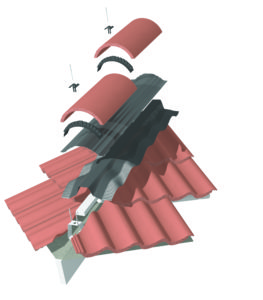 selecting one of our dry fix systems that it will exceed the requirements of BS 8612, giving them the required high levels of durability and performance. All of our dry ridge and dry hip systems also provide a proven and effective means of ventilation, ensuring easy compliance with BS 5250 and NHBC requirements and avoiding problems associated with inadequate ventilation, such as condensation.
selecting one of our dry fix systems that it will exceed the requirements of BS 8612, giving them the required high levels of durability and performance. All of our dry ridge and dry hip systems also provide a proven and effective means of ventilation, ensuring easy compliance with BS 5250 and NHBC requirements and avoiding problems associated with inadequate ventilation, such as condensation.
Specifiers should be in no doubt that dry fix is overwhelmingly the best way to meet BS 5534 requirements and to ensure roofs are protected against increasingly extreme weather but, they must be aware that not all of the systems offer the same quality. As the new Dry Fix Standard is still under development and is not likely to be launched until the end of this year, in the meantime, reviewing roof system specifications and checking the quality of dry fix and ventilation products is a very important process for all specifiers.
The new Dry Fix Standard is just one example of the changes to consider in roofing specifications, so Marley Eternit has launched a new Roofing Sitework Guide and app to give specifiers instant access to technical information to ensure correct system specification and compliance with the latest standards. The free Marley Eternit Roofing Sitework Guide app is available to download from Google Play or iTunes or visit www.marleyeternit.co.uk/pocketexpert to request a printed copy.

